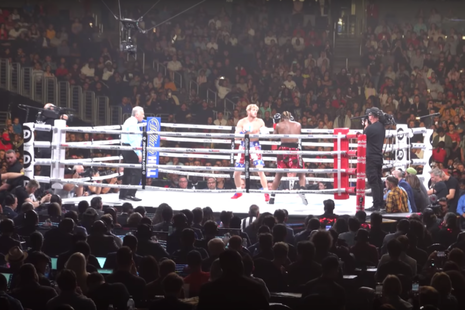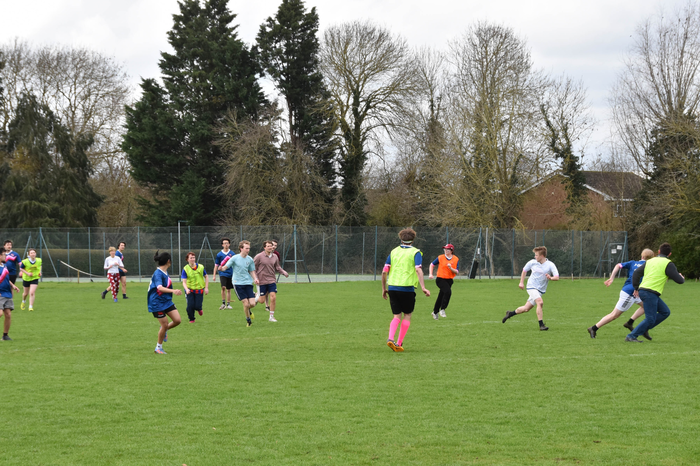Boxing: All-conquering social phenomenon or cheapened noble art?
Lloyd Lewis-Protheroe dives into the evolving world of boxing and the present condition of the sport

It has been a big month or so for professional boxing. The heavyweight bout between Oleksandr Usyk and Tyson Fury, as well as the innovative Queensbury vs Matchroom event have brought many casual fans back to the sport. Within this regrowth, many part-time enthusiasts have found themselves observing a very different sporting arena to that of even five years ago.
“Social media boxing has become so saturated as to have lost all meaning”
Since the mid-2010s, boxing and social media, particularly YouTube, have exhibited an increasingly tight relationship. As with any combat sport, boxing has always facilitated public displays of chauvinism. Even as far back as the days of Muhammad Ali, controversy and exhibitionist slighting were paramount, with Ali’s infamous “what’s my name” taunt against Ernie Terrell being a prime example. In more recent years, yet still before the YouTube boxing era, broadcasters propagated contrived opportunities for machismo and trash-talking, as was seen in the build-up to the contests between Carl Froch and George Groves. These characteristics made boxing a perfect outlet for the gripes held within online communities, with reactive and eye-catching rhetoric desirable.
The earliest iterations of YouTube boxing had some credibility to them. Many of my generation will admit, albeit at times sheepishly, that they were entranced by the novelty of KSI vs Joe Weller. The bouts between the Olatunjis (KSI and Deji) and the Pauls (Logan and Jake), taking place in 2018, managed to retain some sense of legitimacy. This has since dissipated. Social media boxing has become so saturated as to have lost all meaning. It appears that the preset for ‘z-list’ celebrities with something resembling an online following is to stage a poorly organised and thoroughly underwhelming card of dire fighting.
“It is reassuring to see the excitement which Fight Night is so regularly greeted with”
These ills have sadly been translated into the bona fide professional scene. Cross-disciplinary bouts such as Francis Ngannou vs Antony Joshua and, worse still, then-champion Tyson Fury, have undermined the once sacrosanct heavyweight division. With Usyk, a fighter seemingly less inclined to social media discourse, at the helm, perhaps sport will once rediscover its fighting spirit.
Social media has become the main way for the masses to engage with boxing. Before this phenomenon, white-collar occasions provided the means through which the sport has grown. In Cambridge, at least, this has been preserved through the hugely successful Fight Night events. As an attendee myself, I have seen first-hand the anticipation, exhilaration, and jubilation brought about by these spectacles. For the combatants, Fight Night provides a unique training opportunity, with a view to performing in front of a black-tie crowd. Simultaneously, spectators are offered a chance to see proper, honest amateur boxing without the over-zealous indulgences of social media-oriented affairs.
Without wishing to sound like a miserable purist, boxing is in a bad way. Yet, it is not unsalvageable. The contrast between white-collar affairs like Fight Night and events featuring minor celebrities could not be clearer. If the sport is to be furthered in a sustainable manner, the industry of those behind grassroots efforts must be lauded, and very publicly so. It is reassuring to see, as a Cambridge student, the excitement which Fight Night is so regularly greeted with. It has provided the opportunity for those who love the noble art to share it with their friends in a setting which provides ample entertainment for those with little to no previous interest in the sport. While worldwide boxing is in need of some rectification, the Cambridge scene retains much of the legitimacy and tradition which have so tightly woven boxing into the social fabric of Britain.
 Music / The pipes are calling: the life of a Cambridge Organ Scholar25 April 2025
Music / The pipes are calling: the life of a Cambridge Organ Scholar25 April 2025 News / Candidates clash over Chancellorship25 April 2025
News / Candidates clash over Chancellorship25 April 2025 Arts / Plays and playing truant: Stephen Fry’s Cambridge25 April 2025
Arts / Plays and playing truant: Stephen Fry’s Cambridge25 April 2025 Comment / Cambridge builds up the housing crisis25 April 2025
Comment / Cambridge builds up the housing crisis25 April 2025 Interviews / Dr Ally Louks on going viral for all the wrong reasons25 April 2025
Interviews / Dr Ally Louks on going viral for all the wrong reasons25 April 2025






